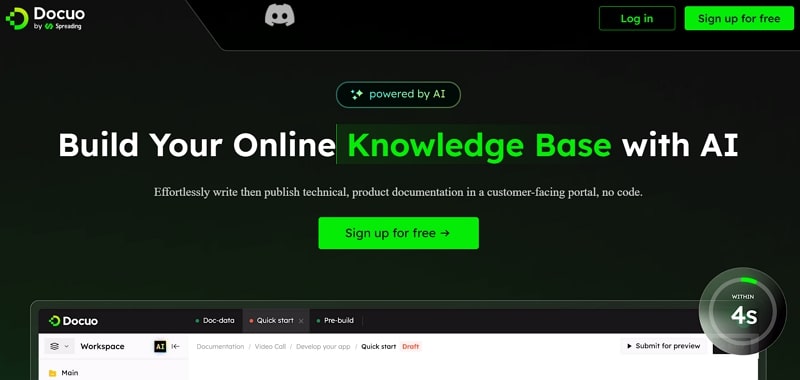During the product development process, teams require product requirements documents to clarify the details to minimize any misunderstanding. Therefore, your product requirements document template should outline the product’s vision, features, and functionalities effectively. In this article, we will walk you through the different aspects involved in writing such product requirements documents.
What is a Product Requirements Document?
The product requirements document is a comprehensive file that lays out the specifications, features, and expectations for a new product. It’s like a roadmap for the development team, designers, and other members involved in creating the product. Furthermore, explaining the product’s goals and problems helps in solving things more transparently.
The product requirement document is usually a collaborative effort that involves input from various team members. Also, it ensures that everyone is aligned with the product’s goals and requirements. Ultimately, the documents ensure that the final product meets the market needs and expectations. That’s because it remains an essential reference throughout the product development lifecycle.
Why Do You Need a PRD?
A product requirements document serves as an essential blueprint for developing a successful product. Apart from this, there is a range of other reasons why PRD is essential for developing a new product. In this section, we are going to discuss some of these reasons:
- Way of Communication: Product reference documentation acts as a communication pathway between the team members of various technicalities. Also, the document ensures everyone is on the same page by clearly specifying its requirements and features.
- Clarity and Direction: Along with the communication way, a PRD provides a clear direction and purpose for the product. It outlines its objectives, which define the primary aim of the product and the problem that it intends to solve.
- Resource Allocation and Planning: Another reason for the importance of PRD is that it helps in resource allocation. This allocation assists the team members to allocate time, budget, and other resources effectively. Moreover, it can be prioritized based on the important functionalities.
- Documentation and Testing: Throughout the product development cycle, the product requirements documentation example serves as a reference document. This also ensures that the final product meets specified requirements. Moreover, quality assurance and testing phases can be performed according to the acceptance criteria described in PRD.
What Should Be Included in the Product Requirements Document?
The product requirements document template defines the purpose and value of a product to be developed. For this reason, there are a certain number of things that should be included in the document. Let’s get your PRD to a professional level by adding potential aspects of the product to it:
- Purpose: First and foremost, this section defines the product’s primary goal, highlighting the specific problem it solves for its intended users. It also elaborates how the product fits into the strategic goals and objectives of the company.
- Features: Here, you’ll find a breakdown of detailed requirements for each product feature. The features also include explanations regarding their importance. In addition to that, this section clarifies why certain functionalities are essential for the product.
- Release Criteria: This part sets the standards for product proficiency across some crucial areas. These areas include functionality, usability, reliability, performance, and supportability. Moreover, this product requirements document example describes the minimum parameters necessary before the product can be considered ready for release.
- Timeline: You can also add the expected timeline for the product’s release in your product requirements document template. It includes target windows, key project milestones, and any dependencies beyond the earlier specified criteria that might impact the product’s release.
- Dependencies Risks: PRD should also include factors like reliance on other systems, technologies, or external factors important for the product’s functionality. Furthermore, it should pinpoint potential hazards and outline strategies to lessen these risks during the product development and release phases.
How to Write a Product Requirements Document?
As we have discussed earlier, adding all the intended functionalities in the final outcome is necessary when creating a product. This is where a project requirements document (PRD) plays a vital role as it communicates these essential details to the entire product team.
Now, we’ll guide you through the process of creating PRD, which will ensure that your next product plan has a ready-made project requirement document template.
1. Detailed Product Definition
First, you will have to start by providing a detailed yet concise description of the product. In the product description, don’t forget to include its primary purpose, core functionalities, and unique selling points. Also, this section should answer fundamental questions about the product’s nature and intended use. You can also provide other high-level information on how the product generates value for the end user.
2. Objectives and Key Goals
After describing the product in the product requirements document example, it is essential to define clearly the specific objectives the product aims to achieve. These goals should align with the broader organizational strategy and indicate the desired outcomes of the product’s development and release. In addition, this section lets you discover the beneficial impact of the product on both the end user and the company creating it.
3. Assumptions and Constraints
During the planning phase of PDR, it is essential to document any assumptions made, particularly those related to user behavior, market trends, or technological capabilities. Similarly, it is crucial to include any constraints that might impact the development of the product. These include budgetary limitations, time constraints, technology dependencies, or regulatory requirements.
4. Context and Strategic Alignment
Furthermore, you need to provide a comprehensive overview of the context surrounding the product and discuss relevant market trends or problems that the product intends to address. This section offers a deeper understanding of the product’s purpose. In addition, you can include an explanation of how the product aligns with the organization’s objectives.
5. Scope Definition and Boundary Setting
Another important aspect of writing a product requirements document template is outlining the scope of work. Additionally, stress the importance of specifying the points that will not be added to set the scope boundaries. You can also emphasize the establishment of focus to ensure the team directs its efforts and resources toward achieving the outlined objectives.
6. Feature Set Elaboration
Moving on, you should also consider providing a comprehensive breakdown of the specific features expected in the product. You can utilize user stories, use cases, diagrams, or prototypes to illustrate these features in detail. Furthermore, this section in the product requirements document acts as a blueprint for the product’s development.
7. Release Criteria Specification
It’s also necessary to specify the criteria that determine the time of each release or milestone for deployment. To achieve this, you must clearly elaborate on the expectations and standards that a particular set of features must meet for release.
8. Success Metrics Identification
At the end of writing a product requirement document, you can define the metrics that will control the success and performance of the product. These metrics may include user adoption rates, customer satisfaction scores, revenue growth targets, or any other aspect aligned with the product’s goals.
9. Use AI Tools to Write Product Requirements Document
The discussion above covers all the necessary attributes for writing an effective PDR. However, you can also gain an advantage from AI tools to assist in this process. Among these tools, Docuo stands out as the most advanced and user-friendly AI-equipped software designed to aid in writing PDRs. This all-in-one software possesses a range of comprehensive features to enhance productivity and creativity.

Final Words
The article concludes by emphasizing the main aspects of what is a product requirements document, its significance, and the process of writing it. The document must add essential elements required for new product development. We outlined several effective features to facilitate the incorporation into the document.
If you want to enhance your creative process, we recommend using Docuo to write your product requirement document. As this tool integrates cutting-edge AI technology, it enables the creation of a PDR within minutes. Moreover, it doesn’t require specialized skills to operate, which makes it user-friendly for individuals with varying levels of technical expertise.
Read more:


